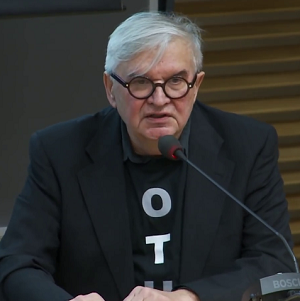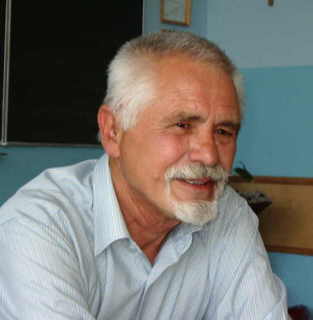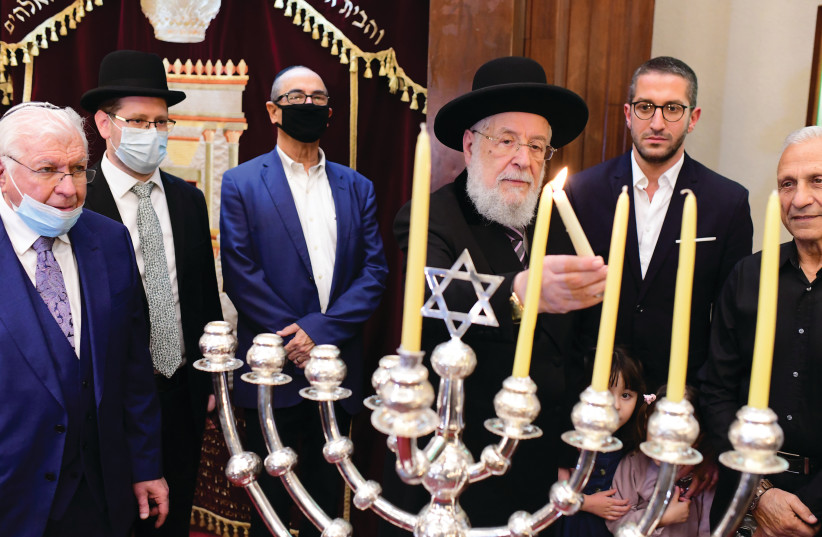 Picturing a Lost World
Picturing a Lost World
CAROL UNGAR
As the documentary ‘Three Minutes’ brings a Polish town’s Jewish pre-Holocaust history into focus, a Yizkor book helped me imagine life in my parents’ Romanian hometown.
.
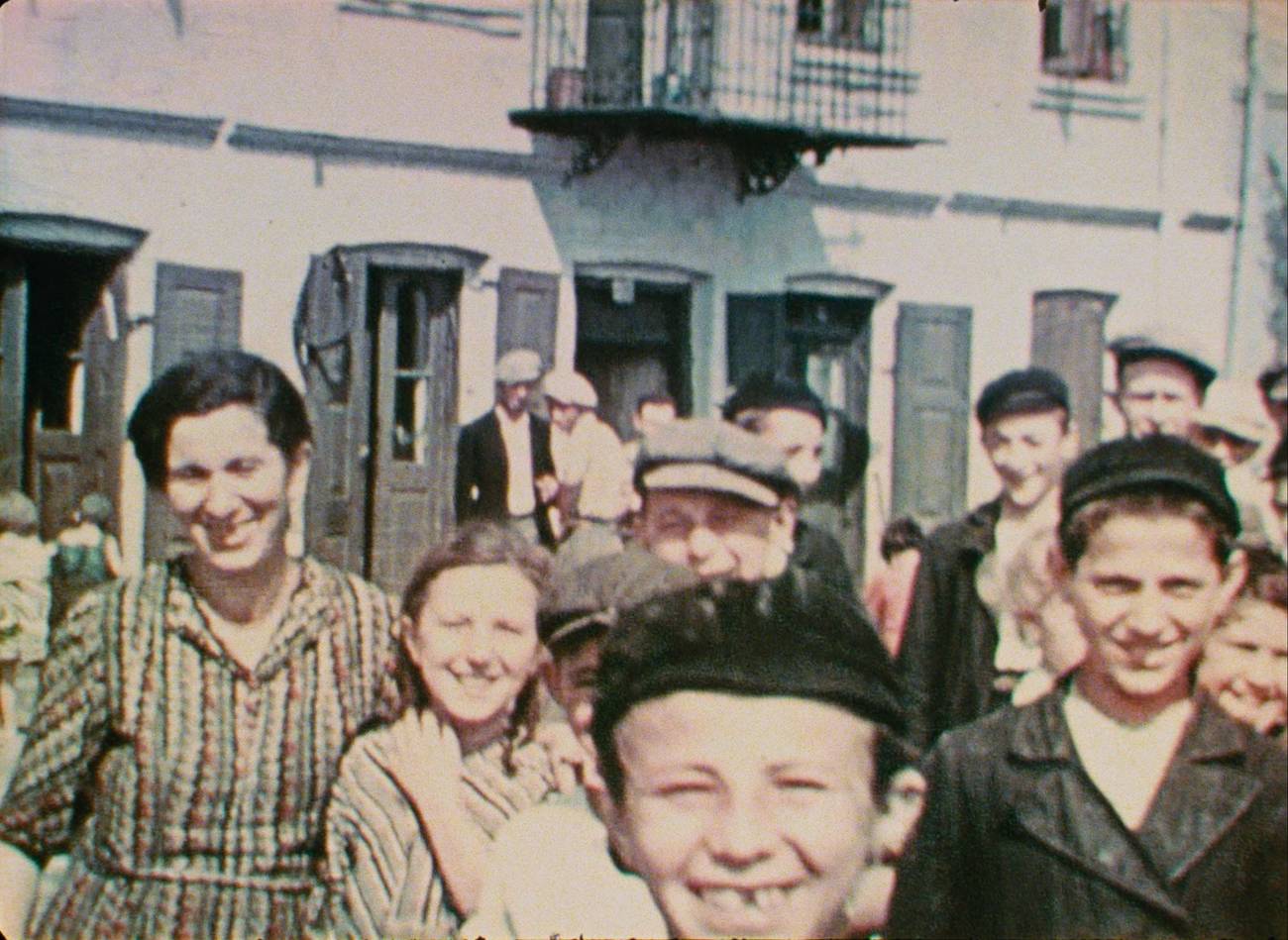 A still from ‘Three Minutes: A Lengthening’FAMILY AFFAIR FILMS, US HOLOCAUST MEMORIAL MUSEUM/SUPER LTD
A still from ‘Three Minutes: A Lengthening’FAMILY AFFAIR FILMS, US HOLOCAUST MEMORIAL MUSEUM/SUPER LTD
Who were the 6 million?
Who were the European Jews—from the towns my parents called home—who died in the Holocaust? What were their lives like? Their dreams, hopes, disappointments? What did they even look like before they were turned into concentration camp skeletons or heaps of ash?
As a child of survivors, these questions have rattled around in my head for decades. I never expected to find answers.
Then I learned about Bianca Stigter’s new documentary, Three Minutes: A Lengthening (now streaming on Hulu), with its miraculous display of three minutes of footage frozen in time from a Jewish, Eastern European town before Hitler destroyed it. The three minutes were filmed by an amateur who had no idea that his home movie would one day become a historical treasure. The American, a garment manufacturer on a visit to his birthplace, used a then cutting-edge innovation—Kodachrome—to capture the Jews of the small Polish town of Nasielsk.
With few exceptions, most notably Roman Vishniac’s work, we don’t get many glimpses into that now-destroyed world. My own parents wouldn’t or couldn’t evoke that world in stories. Their wounds were still too raw to risk reopening.
They also lacked physical objects to tell the story of that time and place. As deportees—my father to a labor camp, and my mother to Auschwitz—my parents lost nearly everyone and everything, including scrapbooks, letters, and photo albums. My father didn’t even have a photo of his mother. The dearth of belongings made it seem as if the world they came from never existed. This shocking reality was not uncommon.
“Now,” Morry Chandler, a Holocaust survivor who appears in the original footage as a 13-year-old boy, quips in Three Minutes, “my children will know that I’m not from Mars.”
My parents weren’t from Nasielsk but their hometowns in the part of Romania known as Transylvania shared the same traditional Ashkenazi cultural milieu. That’s why I reckoned that seeing prewar Nasielsk would be the closest I’d ever get to viewing their home communities during their prewar glory. And it was. The people on the screen in their 1930s clothing—some of them laughing, some smiling, some just staring—look so real that I can almost imagine them as neighbors.
In her film, Stigter reveals the physical world around those frames—even the species of trees that skirt the edge of the frame—but there’s not enough focus on the people. Though Glenn Kurtz, the grandson of the filmmaker on whose memoir the film is based, devoted years to locating the people in the clip, he only succeeded in identifying a small number of them. Most are gone forever, not buried in graves, their names lost to history. That is tragic, of course, and the ultimate humiliation. But did everyone experience that?
To my surprise, the people of my mother’s town, Satmar, left an alternatively lively and wrenching record of themselves and their prewar lives in their Yizkor book.
Yizkor books are memorial volumes compiled by survivors to remember their prewar communities. Written by the survivors themselves, these books describe daily life through essays and photographs, sometimes including short biographies of the dead.
Nasielsk has a book, published in 1953, that evokes a typical Jewish town with its Talmudists, Bundists, Zionists, even a small Yiddish theater, but the book is short. Too short. It doesn’t allow us to know the 3,500 Jews who called Nasielsk home.
In contrast, the Yizkor book from Satmar—bound in dark blue and gold, like a volume of the Talmud—is long and detailed, providing a comprehensive history of the town along with a bit of its unique flavor.
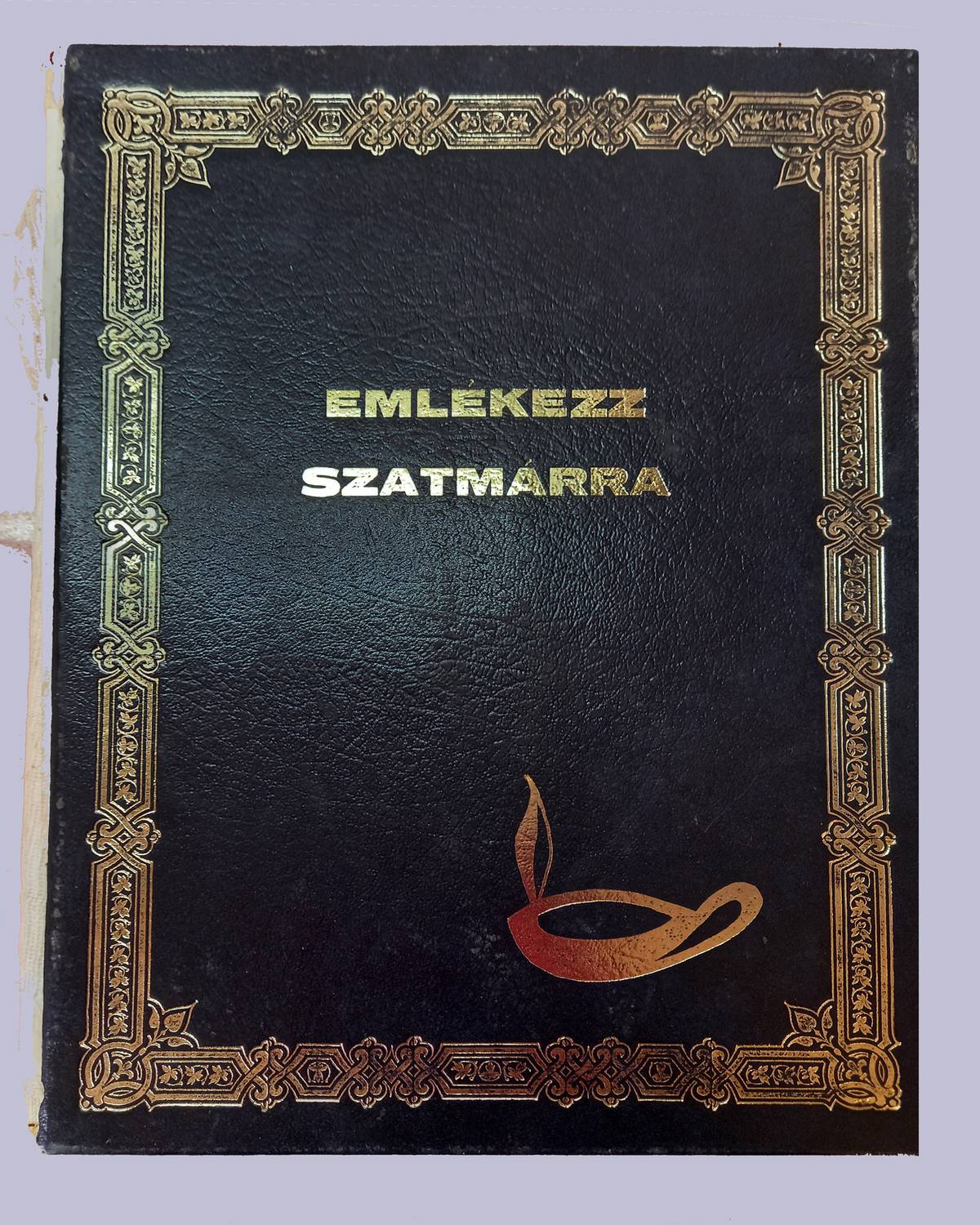
As my mother told me during our Shabbos afternoon walks when I quizzed her incessantly, pulling her history out of her almost by force, prewar Satmar had been lively and diverse. A relatively big town, Satmar was home to 14,000 Jews, most of whom didn’t survive the war. Satmar’s Jews included Hasidim (both Satmar and various other kinds), other Orthodox Jews, and nonobservant assimilated Jews. As in Nasielsk, the overwhelming feeling was deeply Jewish: Life proceeded to the steady beat of the Jewish calendar.
Most of the men worked as shopkeepers, craftsmen, or day laborers, many of them struggling financially. A few owned factories, producing everything from soda pop to chocolate to eye covers for the non-Jewish dead. Satmar also boasted a state-of-the-art Jewish hospital and a Jewish-owned bank called Casa Nostra (no Mafia affiliations), as well as 26 synagogues and at least a half-dozen yeshivas.
Satmar’s best-known resident was Reb Yoelish, Rabbi Joel Teitelbaum, the spiritual father of the Satmar Hasidic dynasty, the world’s largest. While the Rebbe was revered for his personal piety and scholarship, his famously virulent anti-Zionism wasn’t shared by all. My grandmother had been Zionist enough to name her firstborn after Theodor Herzl—tragically, he died as an infant. The Yizkor book commends my grandmother for her acts of charity, these words being the only epitaph for her; like most Holocaust victims, she has no grave. For me—her granddaughter who never knew her but bears her name—this is the most meaningful part of the book.
Another Satmar Zionist, candy store owner Isaiah Lazer, spoke Hebrew at home and sported a beard that resembled Herzl’s, in preparation for an aliyah that tragically never took place. And Satmar had a beating Jewish heart. Nearly everyone seemed to occupy some sort of voluntary post either as a burial society member, a synagogue gabay, prayer leader, Torah reader, Torah teacher, or officer in either the Orthodox or “status quo” kehillah, a uniquely Hungarian denomination straddling the boundaries of modern Orthodoxy and the Conservative movement.
The mini-bios in the Yizkor book point out personal quirks: Mordechai Lefkowitz, a businessman who sat on the governing boards of the chevra kadisha, the Talmud Torah, and the kehillah, is recalled as having been “short in stature but long on good deeds.” Torah scholar Shlomo Yehuda Brach is remembered for his pleasant personality, as well as the long pipe he smoked.
The book also recounts the tale of Reb Yaakov Fischer Kapelybaci; his nickname means “uncle yarmulke,” a poor and elderly Jew who, when arrested by the Nazis, reported his age as 2 weeks old due to an Amelia Bedelia-like mistaken word choice in Hungarian. Because of this, he was freed, and his story provided the hard-pressed Jews of Satmar with much-needed comic relief.
Also included is Yehuda Stern’s darkly humorous suicide note—one of a tiny minority of Jews who took their own lives. “In Berlin,” he writes, as if from beyond the grave, “Hitler rose to power, and I escaped Berlin to Vienna. In 1938 he followed me there, so I escaped to Budapest. In March 1944, he chased me to Budapest to I escaped to Satmar. From there, I escaped to the place where I am now. This time I hope he follows me.”
Unlike the Nasielskers, the people of Satmar remain faceless—the book doesn’t have many photographs—but the word portraits bring the dead back to life. Their stories of devotion, voluntarism, and an ability to laugh in the darkest of times transform them from dead strangers into role models for life.
Carol Ungar’s writing has appeared in NextAvenue, Forbes, NPR, the Jerusalem Post Magazine, and Fox News. She also leads memoir writing workshops on Zoom.
Zawartość publikowanych artykułów i materiałów nie reprezentuje poglądów ani opinii Reunion’68,
ani też webmastera Blogu Reunion’68, chyba ze jest to wyraźnie zaznaczone.
Twoje uwagi, linki, własne artykuły lub wiadomości prześlij na adres:
webmaster@reunion68.com



